Career management in HRM is something that should get all the funding, support, and time that it needs. HR people would just love it if they had everything they require to nurture employee careers and watch them bloom.
But reality is never ideal. Every company faces resource limitations and cultural differences that have an impact on how they handle career management. In fact, five distinct types of career management support have been identified, each with its own consequences for HRM.
By looking at the five models, you can understand where your organization fits in. Are you doing the bare minimum, or providing five-star service?
Career Management in Application
In an effort to construct a normative, or “how to” career management (CM) model, author Yehuda Baruch first looked at existing methods in his study “Career Systems in Transition.” Based on research that surveyed approximately 200 organizations, Baruch discovered five patterns which he described according to:
- Sophistication – number and length of programs, level of skills acquired by the employee
- Involvement – the resources required to support the program, particularly by HRM (human resource management) practitioners
Basic
This is the simplest model. The majority of companies in the study offered this level of CM, which could be described as “sufficient.” This is because some organizations did not even approach this stage. HRM activities included in the basic category are:
- Internal job postings
- Outside education opportunities
- Pre-retirement programs
- Job enhancement initiatives such as cross functional training
The basic model was common to organizations with traditional hierarchies and team-oriented cultures. The essential theme here is quality instead of quantity. Although simple, this framework was effective in meeting employees’ expectations of career management while using a no-frills HRM infrastructure.
Another interesting finding was how some non-traditional companies would not implement even basic CM. Due to constant organizational changes, they had no long-term planning, and had no way to understand what skills would be demanded in the future.
Active Planning
Going beyond the basic level means taking action to involve HR as advisors. The active planning standard takes advantage of common HR functions like performance appraisals as a starting point to map out skill-building requirements. Organizations that sought this type of CM used three elementary activities:
- Career planning and counseling by a direct supervisor
- Career counseling by the human resources department
- Succession planning
Organizations that use active planning have open and proactive cultures, and are fulfilling their workers’ current needs while also considering the future of the company. This style tends to be used by companies that see HRM and upskilling as important, but not critical, and so CM receives a modest amount of resources.
Of particular importance is the involvement of a manager, which also turns out to be a critical aspect of staff engagement.
Formal
A formal CM model is often favored by large organizations, and enhances the steps of active planning to include:
- Documented personal career planning
- Dual career ladders
- Company literature and other written material about career issues
You can imagine a formal program as one that has its own office within an organization instead of a more casual approach about careers, as might be the case in an active planning model.
The formal model puts an emphasis on internal mobility as CM allows employees to discuss opportunities for promotion based on formal career paths.
Active Management
A main difference between the formal and active management models is information. Baruch calls this model “bidirectional.” In this instance, employees are given tools to learn more about L&D possibilities. But at the same time, the company records feedback and the results of employees’ interaction with training experts and the HR department. Organizations in the active management mode implement the following:
- Assessment centers
- Official mentoring programs
- Career workshops
In addition, active management ramps up the frequency of activity. A formal program involves personal career planning, whereas active management has full-time assessment centers.
The active management model is the first step on the road to growth. Although it does not yet focus on continuous development and other growth concepts, it acknowledges the importance of employee input as a means to benefit the whole company.
Multidirectional
The final and most advanced CM model is multidirectional. This framework is characterized by an exchange of information between employees and managers through methods such as:
- Peer appraisal
- Reverse feedback
- Frequent performance surveys and studies
The multidirectional format is most commonly used by organizations with a culture that promotes openness and which tend to be smaller in size. They value equal communication because feedback allows employees to understand the areas where they need to develop. This concept is right in line with a growth mindset.
Manage Career Management with Growthspace
If there’s one thing common to each career management model, it’s learning and development. The most basic resource that an employee needs is L&D courses that reinforce current skills and prepare workers for the future.
But running L&D programs is never basic. A career management program will set a distinct development path for each employee, thereby creating a challenge for HR, which must source and administer L&D experts for every skill.
Growthspace answers this challenge with an industry-leading platform that automates the process of creating, sourcing, and running L&D programs. With Growthspace, HR professionals in any size organization can ease the burden of administration while delivering effective skill training to employees.
Ready to turn insights into impact?
















